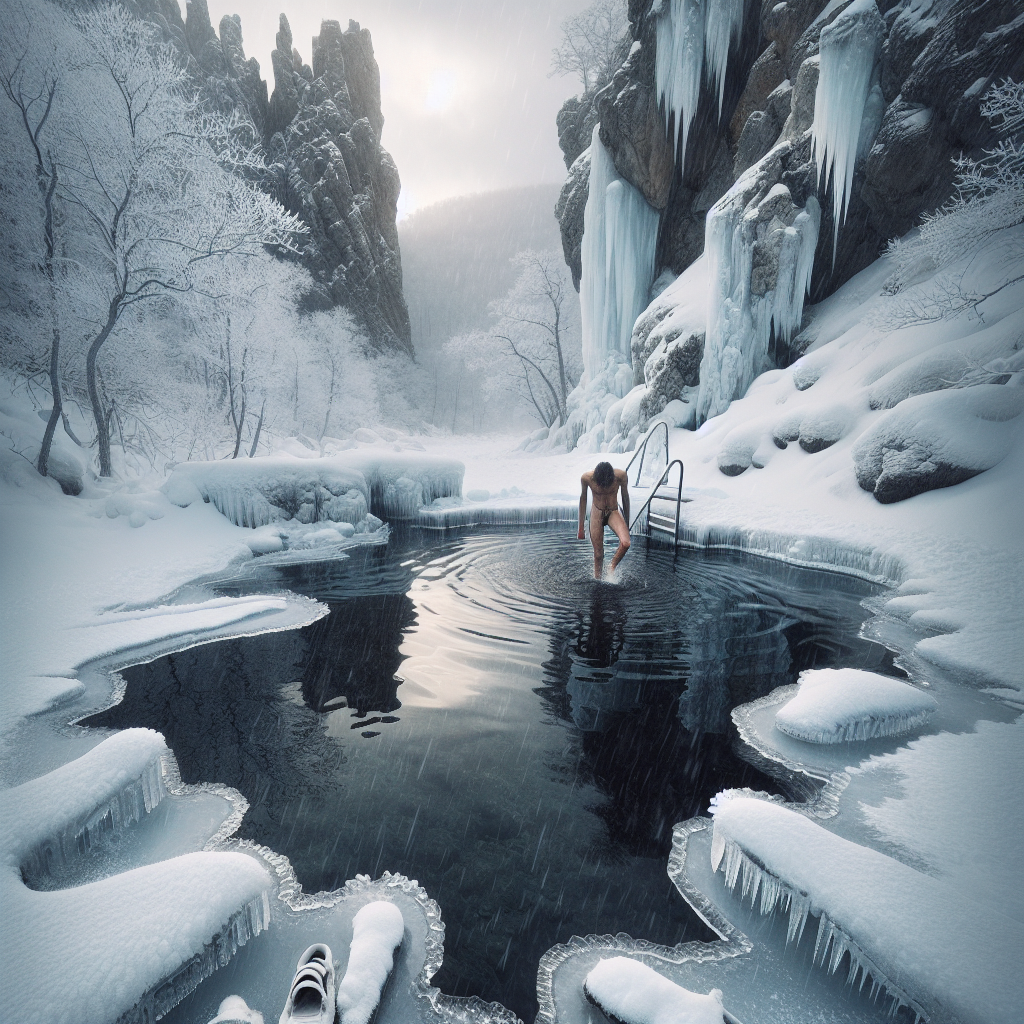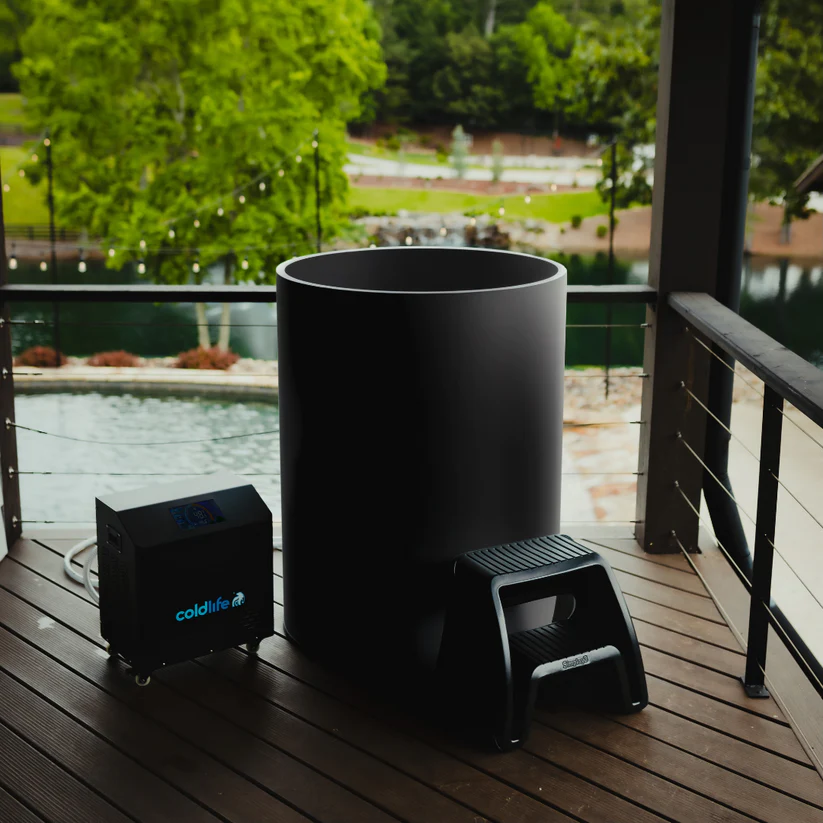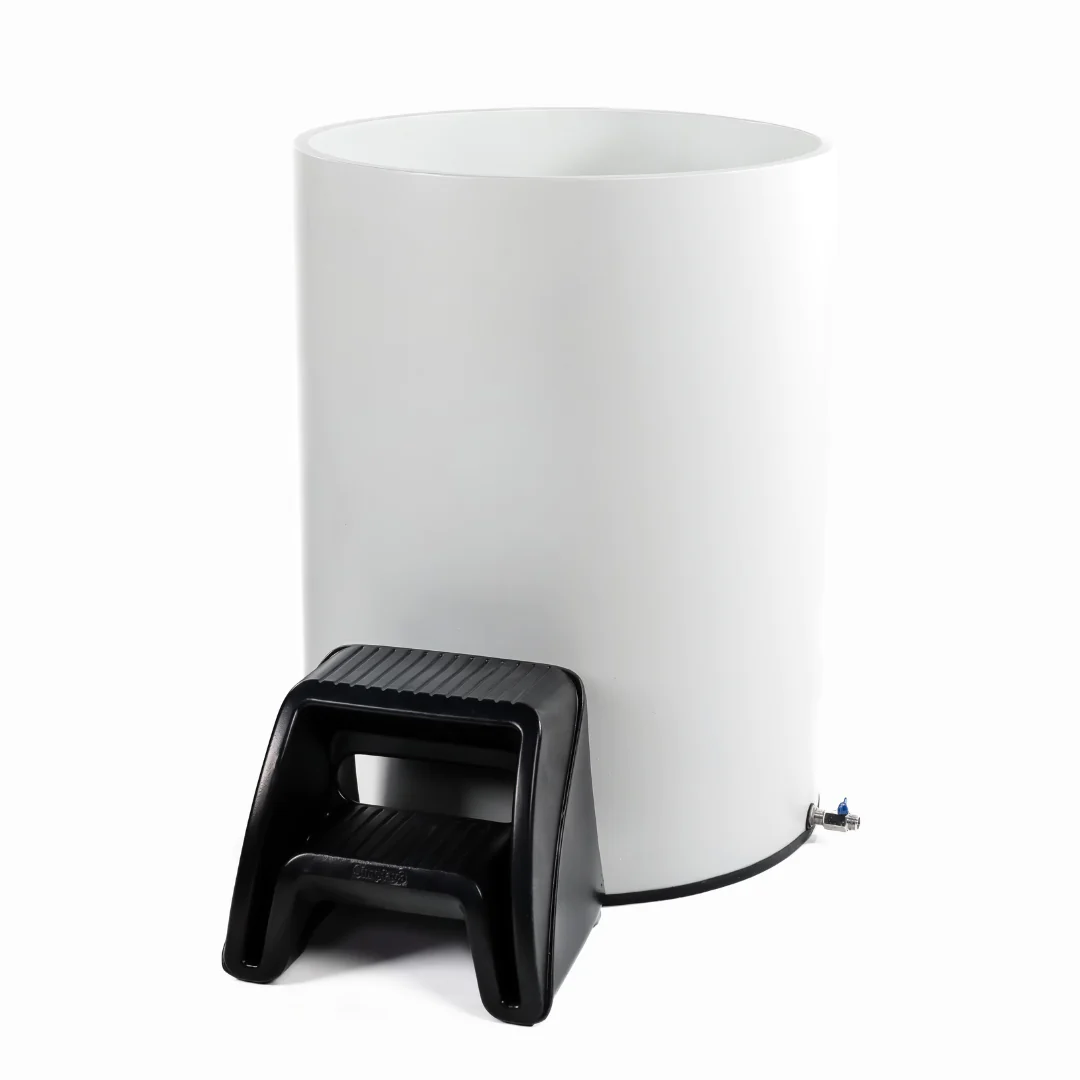Key Takeaways – How cold is too cold for cold water plunge
Takeaway 1:
Finding the right temperature for your cold plunge is crucial, and research suggests that the ideal range is between 10-15 degrees Celsius (50-60 degrees Fahrenheit). But hey, we’re all unique, so your tolerance to cold might be different. It’s important to listen to your body and adjust the temperature accordingly. Start with a warmer temperature and gradually decrease it if needed, especially if you’re new to this whole icy adventure. Remember, too low or too high temperatures won’t give you the desired benefits.Takeaway 2:
Not only does the temperature matter, but so does the duration of your plunge! Usually, experts suggest spending around 1 to 10 minutes in that chilly water. Of course, this varies depending on your tolerance levels and what you’re hoping to achieve health-wise. However, if you’re just starting out on this frosty journey, take it easy! Don’t dive into extremely low temperatures or stay in for overly long periods. Slow and steady wins the race!Takeaway 3:
While a cold plunge can work wonders for your muscles and mood among other things, safety should always be priority number one. Frostbite and hypothermia are no fun at all! So remember to listen closely to what your body is telling you during these icy adventures. If something doesn’t feel right or if you start shivering uncontrollably like a penguin caught in a snowstorm, it’s time to call it quits. And hey, don’t forget those optimal safety measures while taking the plunge—the last thing we want is an unplanned emergency room visit! In summary: 1) Adjusting the temperature based on personal comfort is key—starting warmer and gradually reducing is recommended. 2) Immersion times should be tailored to individual tolerance and goals—don’t push yourself too hard, especially as a beginner. 3) Safety first—listen to your body and perform cold plunges under optimal safety measures.Our #1 Best Recommended Cold Plunge
1. Visit our website’s The Cold Life section to explore more about cold lifestyle. 2. To get updates about the cold lifestyle, make sure to check out our The Cold Life page regularly. 3. If you are interested in discovering the ins and outs of a chillier way of living, don’t miss our The Cold Life webpage.Are you ready to redefine your limits with cold immersion?
Explore the compelling truth behind cold plunging and its remarkable benefits for mind and body.
Dive into the Cold Life Plunge Bundle now to embark on your journey to revitalization and strength. Transform your life today!
Here’s a Youtube Video about How cold is too cold for cold water plunge
In discussing how cold is too cold for a cold water plunge, several factors come into play.
The ideal temperature rests heavily on the individual’s tolerance, making it a personal experience that varies from person to person.
For beginners, it is recommended to gradually adjust the temperature to promote acclimatization, ensuring both safety and therapeutic effectiveness.
Striking a delicate balance between these benefits and potential risks is crucial, with optimal exposure duration playing an integral role in this equilibrium.
Emphasizing safety measures whilst exploring potential health benefits serves as the cornerstone of any successful and beneficial cold plunge experience.

Understanding the Ideal Temperature for a Cold Water Plunge
Ever wondered, “how cold is too cold for a cold water plunge?” It’s a valuable question that deserves a fitting answer. The ideal temperature for engaging in cold water therapy lies between 10-15 degrees Celsius (50-60 degrees Fahrenheit). Oh and by the way, this isn’t just some arbitrary range. It offers the perfect balance, giving you therapeutic benefits while ensuring your safety.The Significant Role of Individual Tolerance in Cold Plunging
With that said, let’s consider an often overlooked fact – individual tolerance to temperatures can significantly vary. When diving headfirst into the benefits of cold water plunge, it’s crucial to factor in your comfort level and adjust as required.
Download this courtesy guide to optimize your sauna and cold plunge experience and health optimization.
Download the Free Guide TodayGradually Adjusting Temperature for Cold Plunge Beginners
If you’re new to this practice, here’s some friendly advice. Start with a warmer temperature and steadily work your way down. In any case, it’s important not to jump directly into extreme conditions without acclimatization.The Crucial Balance of Therapeutic Benefits and Safety in Cold Water Plunges
The effects of extreme cold on body can be double-edged; while there may be potential health benefits, risks of hypothermia and other dangers cannot be ignored. Thus maintaining a crucial balance is key when understanding water temperatures.Optimizing Exposure Duration for Maximum Effectiveness in a Cold Water Plunge
Not only the temperature, but the duration of exposure also matters significantly when it comes to optimizing the benefits of cold water plunge. Now that I think about it, suggested immersion times usually range from 1 to 10 minutes; although like temperature, this too should be based on your individual tolerance and health objectives. You see, symptoms of too much cold exposure may become severe if not properly managed.Potential Health Benefits and Safety Measures: An Integral Aspect of Cold Plunging
Here’s what you need to know: potential health benefits such as reducing muscle inflammation and boosting mood are balanced by safety concerns like frostbite, hypothermia and other injuries that can occur due to extreme cold. Therefore, always remember safety tips for cold water plunge which include listening to your body’s responses during a session.
Those keen to explore the benefits of cold water immersion might be questioning “what is a good cold plunge temperature“. It’s crucial to understand the difference between discomfort and dangerous low temperatures. If you’re wondering if a “30 degrees is too cold for a cold plunge“, understanding how your body responds to these conditions is vital. Cold water immersion therapy can be beneficial, but it’s essential to get the temperature just right. After a session of intense workout, many ask whether they should opt for “cold plunge or sauna after workout“. The correct answer often varies depending on personal preference and health conditions. Moreover, individuals must consider if they should choose “cold plunge or cryotherapy“. Both offer unique benefits and risks that need careful consideration. For those who want to add an element of breath control into their routine, understanding suitable “breathing techniques for cold plunge” could make the experience more effective. Finally, always remember what precautions one needs to take and learn about what to do “after you cold plunge“. This would ensure that you derive maximum benefits out of your cold water immersion sessions while keeping safety at the forefront.
My Personal Take about How cold is too cold for cold water plunge
Hey there, it’s your good ol’ friend George, with another exciting adventure in the world of saunas and cold plunges! You see, today we’re diving right into a topic many of you have asked about – ‘how cold is too cold for a cold water plunge‘.
In any case, I’ve spent years studying and exploring different temperatures allowing me to create an ultimate guide on this hot topic – or should I say freezing? Now that I think about it, understanding the right temperature is not only essential for your comfort but also crucial for achieving optimal health benefits.
A few Words of Advice, don’t let the chilly waters intimidate you; it’s all part of the exhilarating journey. Control your breathing, embrace the chill and soon enough, you’ll be raving about these ice baths as much as you rave about my infamous saunas! Trust me; once you take that plunge into our icy paradise – or heated haven if you prefer – there’s no going back. Here’s to warm hearts in cold waters!
Our #1 Best Recommended Cold Plunge for most People
Taking a cold water plunge can be invigorating, but one must always consider safety. It’s important to know how cold is too cold for your body to handle. For more comprehensive knowledge, we recommend this ultimate guide to explore the impact of cold water plunges on our bodies.Discover the unparalleled benefits of cold immersion with ColdLife Plunge 1. Unleash your full potential with our innovative cold plunging solution. Explore the transformative effects on your body and mind. Elevate your lifestyle with ColdLife Plunge 1 today!
Frequently Asked Questions about How cold is too cold for cold water plunge
1. How cold is too cold for a cold water plunge?
The ideal temperature for a cold plunge or ice bath is between 10-15 degrees Celsius (50-60 degrees Fahrenheit). However, individual tolerance to cold temperatures can vary significantly, so it’s crucial to consider your own comfort and adjust as needed.
2. Can I start with colder temperatures if I’m new to cold plunging?
Starting with a warmer temperature and gradually working your way down is recommended, especially for individuals new to the practice of cold plunging. It allows your body to acclimate and reduces the risk of shock.
3. What happens if the water temperature goes below 10°C (50°F)?
Temperatures below 10°C (50°F) can lead to shock and may not offer the desired therapeutic benefits. It’s important to maintain an optimal range for safety and effectiveness.
4. Is there a maximum temperature that should not be exceeded in a cold water plunge?
Temperatures above 15°C (60°F) might not provide the desired therapeutic benefits. It’s best to stay within the recommended range of 10-15 degrees Celsius (50-60 degrees Fahrenheit).
5. How long should I stay in a cold water plunge?
Suggested immersion times usually range from 1 to 10 minutes depending on individual tolerance and specific health goals. Beginners should avoid starting with extremely low temperatures or prolonged durations.
6. Are there any risks involved in a cold water plunge?
Exposure to extreme cold can pose risks such as frostbite, hypothermia, and other injuries. Always listen to your body and prioritize safety when engaging in a cold water plunge. Follow proper guidelines and take necessary precautions at all times.
Now you know How cold is too cold for cold water plunge , but that’s only the beginning of your journey here at Sweat N Chill Zone. If you found this post useful there’s more to learn to get you to the next step of your sauna & cold plunge journey. If you read our next articles you’ll be a step further than most people.
Before you go…
Takeaway 1:
Finding the right temperature for your cold plunge is crucial, and research suggests that the ideal range is between 10-15 degrees Celsius (50-60 degrees Fahrenheit). But hey, we’re all unique, so your tolerance to cold might be different. It’s important to listen to your body and adjust the temperature accordingly. Start with a warmer temperature and gradually decrease it if needed, especially if you’re new to this whole icy adventure. Remember, too low or too high temperatures won’t give you the desired benefits.Takeaway 2:
Not only does the temperature matter, but so does the duration of your plunge! Usually, experts suggest spending around 1 to 10 minutes in that chilly water. Of course, this varies depending on your tolerance levels and what you’re hoping to achieve health-wise. However, if you’re just starting out on this frosty journey, take it easy! Don’t dive into extremely low temperatures or stay in for overly long periods. Slow and steady wins the race!Takeaway 3:
While a cold plunge can work wonders for your muscles and mood among other things, safety should always be priority number one. Frostbite and hypothermia are no fun at all! So remember to listen closely to what your body is telling you during these icy adventures. If something doesn’t feel right or if you start shivering uncontrollably like a penguin caught in a snowstorm, it’s time to call it quits. And hey, don’t forget those optimal safety measures while taking the plunge—the last thing we want is an unplanned emergency room visit! In summary: 1) Adjusting the temperature based on personal comfort is key—starting warmer and gradually reducing is recommended. 2) Immersion times should be tailored to individual tolerance and goals—don’t push yourself too hard, especially as a beginner. 3) Safety first—listen to your body and perform cold plunges under optimal safety measures. If you’re unsure of the safe temperatures for cold water therapy, our article on how cold is too cold for a cold water plunge is an excellent resource. Additionally, understanding what happens when you take a cold plunge can help guide you in finding the best way to cold plunge, along with our recommendations for the best, most affordable cold plunges.George From Sweat N Chill Zone
George, the passionate founder of Sweat N Chill Zone, is an ardent advocate for holistic wellness through the healing powers of saunas and cold plunges. With a background in health sciences and a fervent dedication to sharing the benefits of thermal therapy, George curates an informative space, offering insights, tips, and expert advice to help individuals optimize their health and well-being through the transformative effects of heat and cold treatments. Through Sweat N Chill Zone, George aims to inspire and educate, fostering a community centered around rejuvenation and vitality.
Download this courtesy guide to optimize your sauna and cold plunge experience and health optimization.
Download the Free Guide Today

